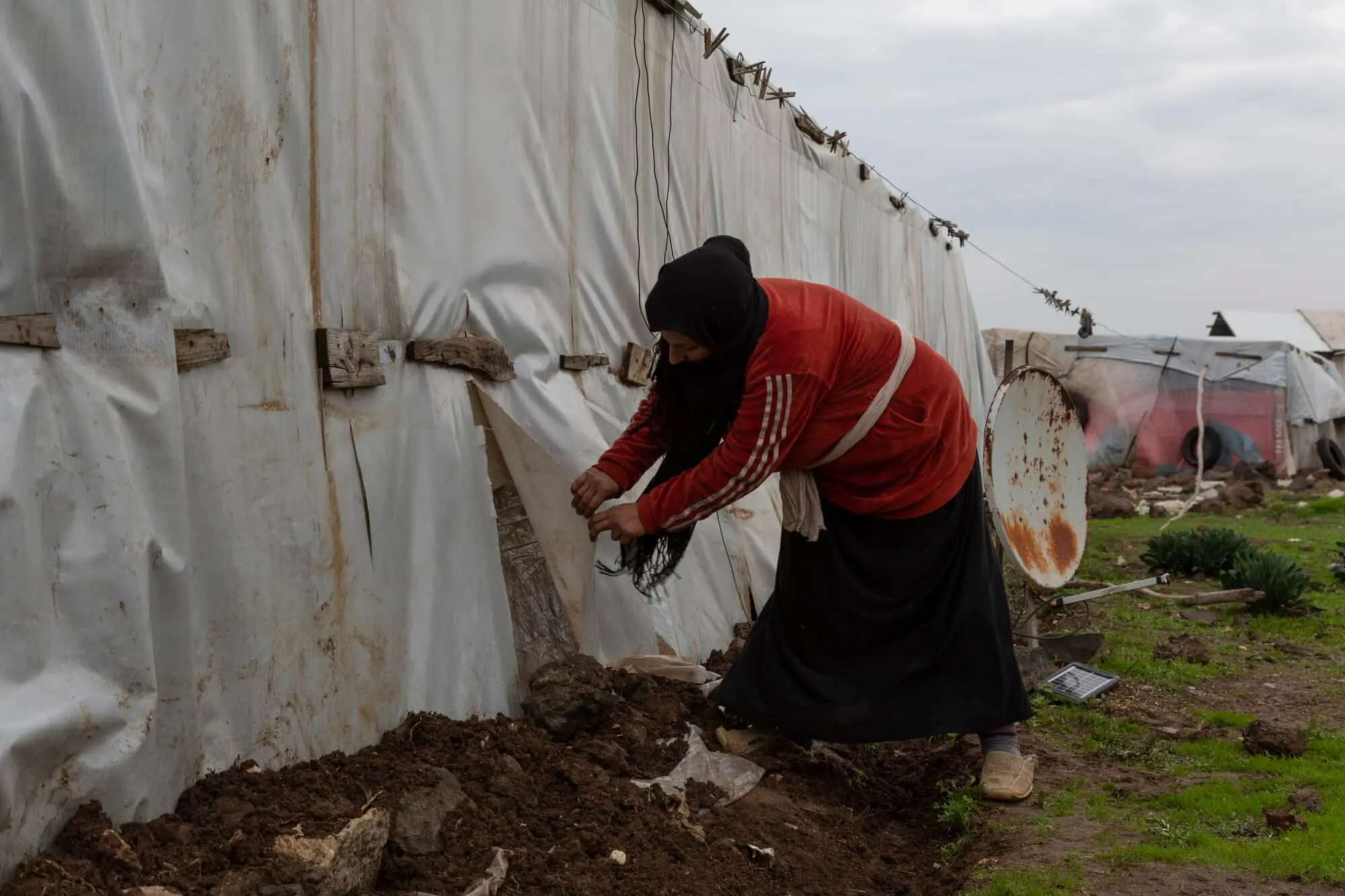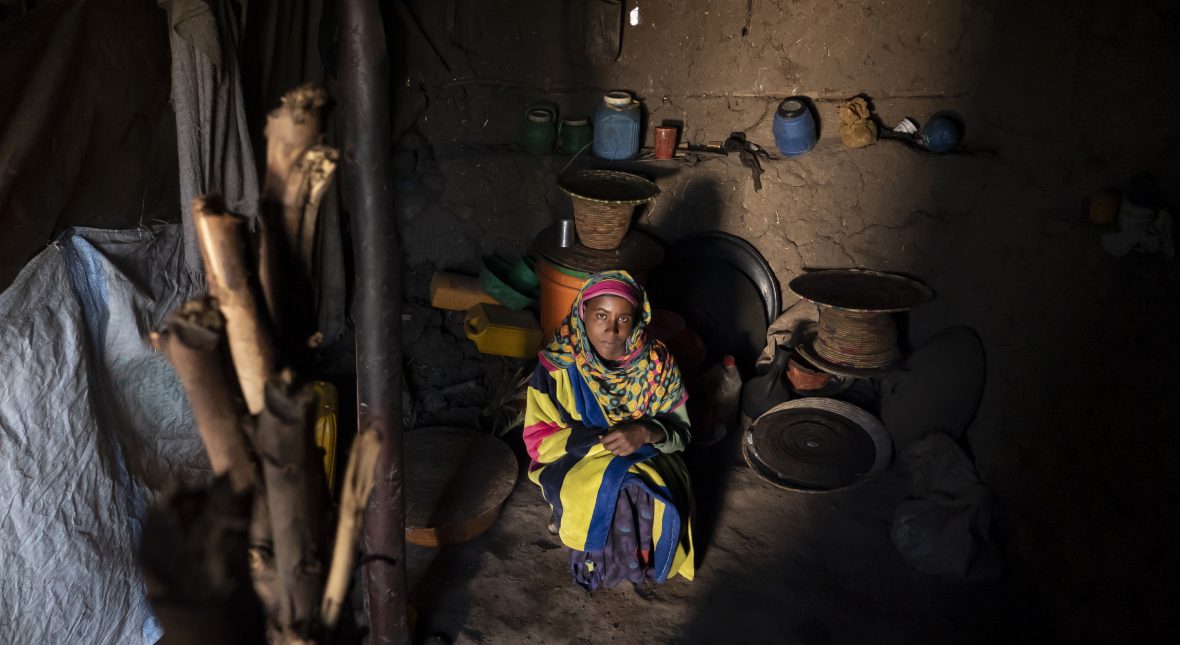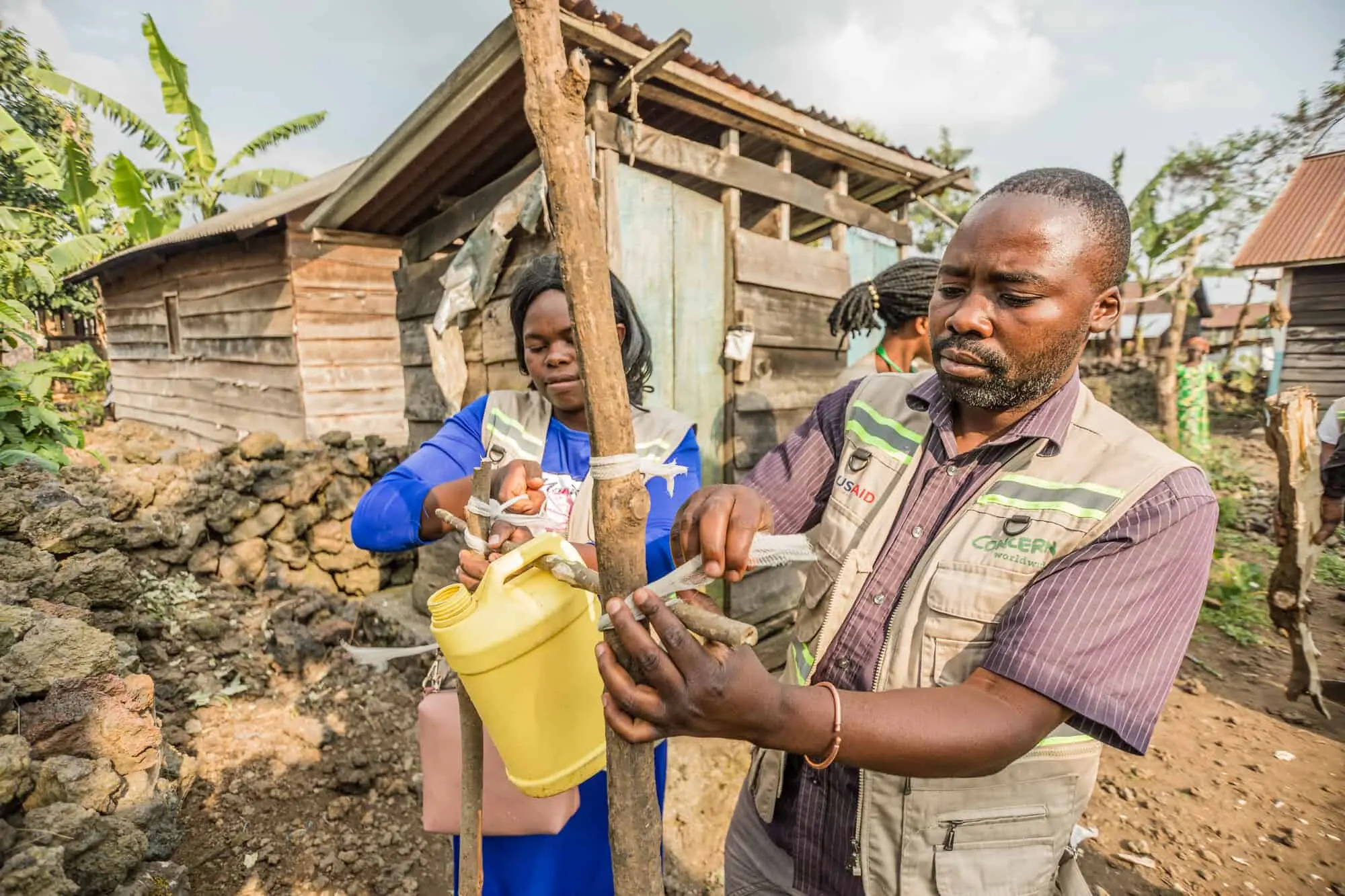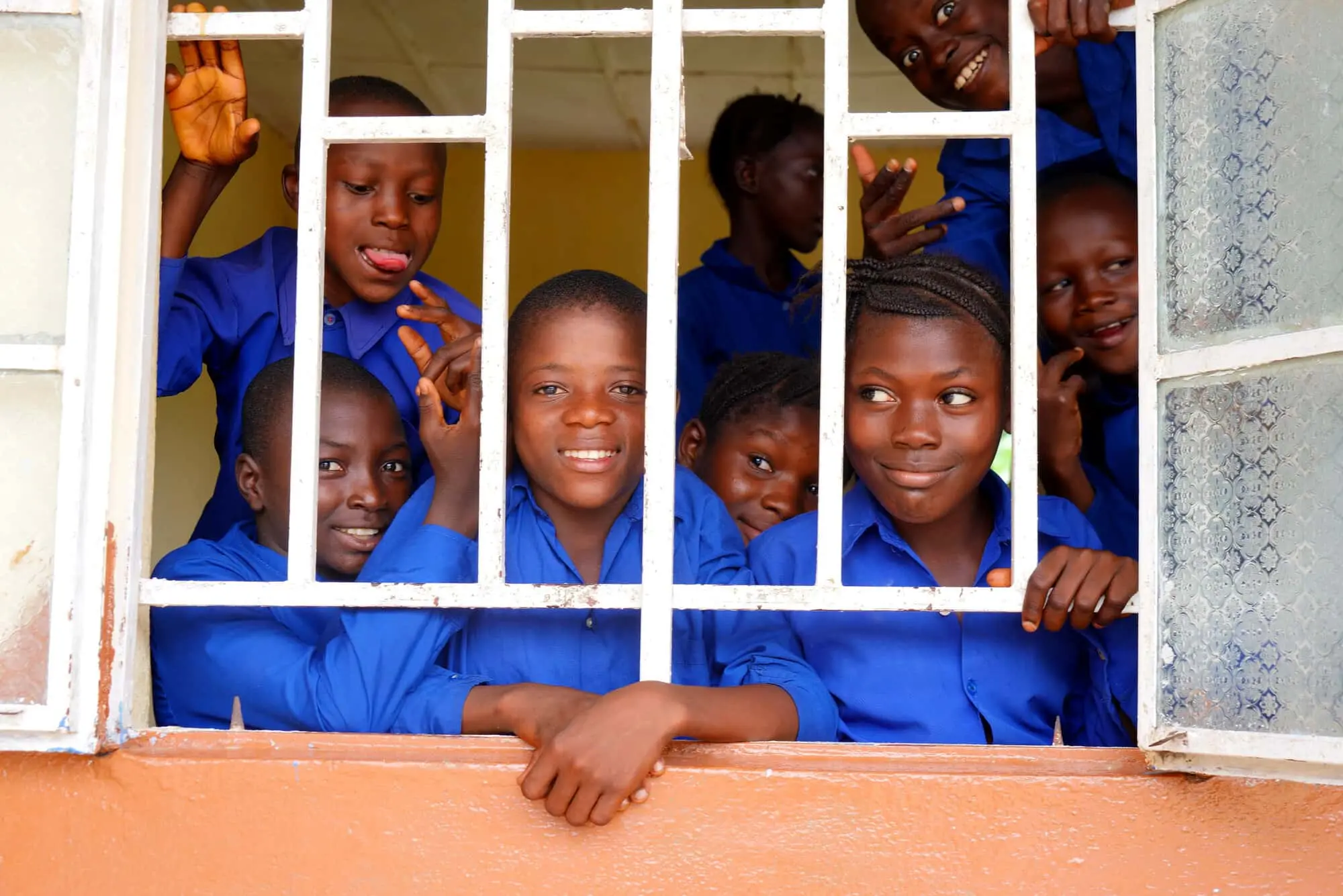News
How climate change keeps people in poverty
By 2030, climate change could force more than 100 million people into extreme poverty.
Read MoreApproximately 10% of the world’s population lives in extreme poverty. But why? Updated for 2022, we look at 11 of the top causes of poverty around the world.
For most of us, living on less than $2 a day seems far removed from reality. But it is the reality for roughly 800 million people around the globe. Approximately 10% of the global population lives in extreme poverty, meaning that they're living below the poverty line of $1.90 per day.
There is some good news: In 1990, that figure was 1.8 billion people. We've made progress. But in the last few years we've also begun to move backwards — in 2019, estimates were closer to 600 million people living in extreme poverty. Climate change and conflict have both hindered progress. The global economic impact of the COVID-19 pandemic only made matters worse.
There’s no one single solution to poverty. There isn't a single cause of poverty, either. In fact, most cases of poverty in 2022 are the result of a combination of factors. Understanding what these factors are and how they work together is a critical step to sustainably ending poverty.
Let's start with something both simple and complex: Inequality is easy enough to understand as a concept. When one group has fewer rights and resources based on an aspect of their identity compared to others in a community, that's inequality. This marginalization could be based on caste, ability, age, health, social status or — most common and most pervasive — gender.
How inequality functions as a cause of poverty, however, is a bit more multifaceted. When people are given fewer rights or assets based on their ethnicity or tribal affiliation, that means they have fewer opportunities to move ahead in life. We see this often in gender inequality, especially when women have fewer rights around their health and economic power. In this case, equality isn't even relative. It doesn't matter that someone has more. What matters is that someone else doesn't have enough.

This is especially harmful when inequality is combined with risk — which is the basic formula we use at Concern to understand the cycle of poverty. A widow raising a family of five won't have the same resources available to her husband. If she lives in an area vulnerable to the effects of climate change, that puts pressure on what few resources she has. In some countries, this is the rule rather than the exception.
To address inequality, we must consider all groups in a community. What's more, to build equality we have to consider equality of results, as opposed to equality of resources.
If poverty is caused by inequality multiplied by risk, let's talk about risks. At the top of the list of risks for poverty is conflict. Large-scale, protracted crises, such as the decade of civil war in Syria, can grind an otherwise thriving economy to a halt. As fighting continues in Syria, for example, millions have fled their homes (often with nothing but the clothes on their backs). Public infrastructure has been destroyed. Prior to 2011, as few as 10% of Syrians lived below the poverty line. Ten years later, more than 80% of Syrians now live below the poverty line.
But the nature of conflict has changed in the last few decades, and violence has become more localized. This also has a huge impact on communities, especially those that were already struggling. In some ways, it's even harder to cope as these crises go ignored in headlines and primetime news. Fighting can stretch out for years, if not decades, and leave families in a permanent state of alert. This makes it hard to plan for the long-term around family businesses, farms, or education.

You might think that poverty causes hunger (and you would be right!). But hunger is also a cause — and maintainer — of poverty. If a person doesn’t get enough food, they’ll lack the strength and energy needed to work. Or their immune system will weaken from malnutrition and leave them more susceptible to illness that prevents them from getting to work.
In Ethiopia, stunting contributes to GDP losses as high as 16%.
This can lead to a vicious cycle, especially for children. From womb to world, the first 1,000 days of a child’s life are key to ensuring their future health. For children born into low-income families, health is also a key asset to their breaking the cycle of poverty. However, if a mother is malnourished during pregnancy, that can be passed on to her children. The costs of malnutrition may be felt over a lifetime: Adults who were stunted as children earn, on average, 22% less than those who weren't stunted. In Ethiopia, stunting contributes to GDP losses as high as 16%.

As we saw above with the effects of hunger, extreme poverty and poor health go hand-in-hand. In countries with weakened health systems, easily-preventable and treatable illnesses like malaria, diarrhea, and respiratory infections can be fatal. Especially for young children.
When people must travel far distances to clinics or pay for medicine, it drains already vulnerable households of money and assets. This can tip a family from poverty into extreme poverty. For women in particular, pregnancy and childbirth can be a death sentence. Maternal health is often one of the most overlooked areas of healthcare in countries that are still built around patriarchal structures. New mothers and mothers-to-be are often barred from seeking care without their father's or husband's permission. Adolescent girls who are pregnant (especially out of wedlock) face even greater inequities and discrimination.
Currently, more than 2 billion people don’t have access to clean water at home. This means that people collectively spend 200 million hours every day walking long distances to fetch water. That’s precious time that could be used working, or getting an education to help secure a job later in life. And if you guessed that most of these 200 million hours are shouldered by women and girls… you're correct. Water is a women's issue as well as a cause of poverty.
Contaminated water can also lead to a host of waterborne diseases, ranging from the chronic to the life-threatening. Poor water infrastructure — such as sanitation and hygiene facilities — can compound this. It can also create other barriers to escaping poverty, such as preventing girls from going to school during their cycles.

Climate change causes poverty, working as an interdependent link between not only extreme poverty but also many of the other causes on this list — including hunger, conflict, inequality, and a lack of education (see below). One report from the World Bank estimates that the climate crisis has the power to push more than 100 million people into poverty over the next decade.
Many of the world’s poorest populations rely on farming or hunting and gathering to eat and earn a living. Malawi, as an example, is 80% agrarian. They often have only just enough food and assets to last through the next season, and not enough reserves to fall back on in the event of a poor harvest. So when climate change or natural disasters (including the widespread droughts caused by El Niño) leave millions of people without food, it pushes them further into poverty, and can make recovery even more difficult.
Not every person without an education is living in extreme poverty. But most adults living in extreme poverty did not receive a quality education. And, if they have children, they're likely passing that on to them. There are many barriers to education around the world, including a lack of money for uniforms and books or a cultural bias against girls’ education.
But education is often referred to as the great equalizer. That's because it can open the door to jobs and other resources and skills that a family needs to not just survive, but thrive. UNESCO estimates that 171 million people could be lifted out of extreme poverty if they left school with basic reading skills. Poverty threatens education, but education can also help end poverty.

What if you have to go to work, but there are no roads to get you there? Or what if heavy rains have flooded your route and made it impossible to travel? We're used to similar roadblocks (so to speak) in the United States. But usually we can rely on our local governments to step in.
A lack of infrastructure — from roads, bridges, and wells, to cables for light, cell phones, and internet — can isolate communities living in rural areas. Living off the grid often means living without the ability to go to school, work, or the market to buy and sell goods. Traveling further distances to access basic services not only takes time, it costs money, keeping families in poverty.
As we've found in the last two years, isolation limits opportunity. Without opportunity, many find it difficult, if not impossible, to escape extreme poverty.
Speaking of things we've learned over the last two years… A poor healthcare system that affects individuals, or even whole communities, is one cause of poverty. But a large-scale epidemic or pandemic merits its own spot on this list. COVID-19 isn't the first time a public health crisis has fueled the cycle of poverty. More localized epidemics like Ebola in West Africa (and, later, in the DRC), cholera in Haiti or the DRC, or malaria in Sierra Leone have demonstrated how local and national governments can grind to a halt while working to stop the spread of a disease, provide resources to frontline workers and centers, and come up with contingency plans as day-to-day life is disrupted.
All of this comes, naturally, at a cost. In Guinea, Liberia, and Sierra Leone — the three countries hit hardest by the 2014-16 West African Ebola epidemic — an estimated $2.2 billion was lost across all three countries' GDPs in 2015 as a direct result of the epidemic. This included losses in the private sector, agricultural production, and international trade.
In the United States, we're familiar with social welfare programs that people can access if they need healthcare or food assistance. We also pay into insurances against unemployment and fund social security through our paychecks. Theses systems ensure that we have a safety net to fall back on if we lose our job or retire.
But not every government can provide this type of help to its citizens. Without that safety net, there’s nothing to stop vulnerable families from backsliding further into extreme poverty. Especially in the face of the unexpected.
If a family or community has reserves in place, they can weather some risk. They can fall back on savings accounts or even a low-interest loan in the case of a health scare or an unexpected layoff, even if the government doesn't have support systems to cover them. Proper food storage systems can help stretch a previous harvest if a drought or natural disaster ruins the next one.
At its core, poverty is a lack of basic assets or a lack on return from what assets a person has.
People living in extreme poverty can't rely on these safety nets, however. At its core, poverty is a lack of basic assets or a lack on return from what assets a person has. This leads to negative coping mechanisms, including pulling children out of school to work (or even marry), and selling off assets to buy food. That can help a family make it through one bad season, but not another. For communities constantly facing climate extremes or prolonged conflict, the repeated shocks can send a family reeling into extreme poverty and prevent them from ever recovering.
At Concern, we believe that zero poverty is possible, especially when we work with communities to address both inequalities and risks. Last year, we reached 36.9 million people with programs designed to address the specific causes of extreme poverty in countries, communities, and families.
Pictured in the banner image for this story is one of those people, Adrenise Lusa. Born 60 years ago in the DRC's Manono Territory, Adrenise joined Concern's Graduation program in 2019 and participated in trainings on income generation and entrepreneurship, which gave her ideas on how to increase her production and income. With monthly cash transfers as part of Graduation and a loan from her community Village Savings and Loans Association, she invested in a few income-generating activities including goat rearing and trading oil, maize, and cassava. Prior to joining Graduation, she had the ideas. But, as she explains, "I didn’t start these businesses because I just didn’t have enough money."
Since launching her new ventures, Adrenise has increased her income from approximately 30,000 francs per month to anywhere between 100–400,000 francs per month, depending on the season. She's used her additional income to buy a plot of land and build a new house, feed her family with more nutritious food, and send her son and daughter to university.
You can make your own impact by supporting our efforts working with the world’s poorest communities. Learn more about the other ways you can help the fight against poverty.